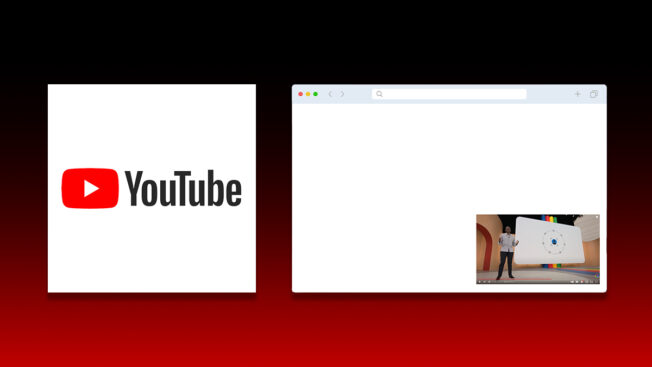Introducing the Adweek Podcast Network. Access infinite inspiration in your pocket on everything from career advice and creativity to metaverse marketing and more. Browse all podcasts.
Google removed “in-stream” classification from the name of one of its video formats. The change comes at a time when buyers are questioning whether they can trust the inventory the video giant sells.
In-Stream Ads will now be called Skippable Ads, the company wrote in a blog post that also went to buyers in an email yesterday, according to an email seen by Adweek. The company said this change will not impact campaign or management workflow, but instead was made “to more accurately describe the ad format.”
A Google spokesperson said the change only applies to awareness and consideration campaigns in Display and Video 360 and that the change was made to simplify naming conventions between awareness formats, which all only feature in-stream placements but are not all called in-stream.
“In early June, we started offering Display & Video 360 advertisers 30 and 60 second on-skippable in-stream ads on YouTube and YouTube TV,” the spokesperson said. “Given that other YouTube ad formats serve in-stream, we changed the name of the skippable ad format from “in-stream ads” to “skippable ads” for clarity and consistency.”
The change comes after Google’s in-stream video placements have been called into question. A report from research firm Adalytics accused YouTube of misleading buyers, particularly selling outstream video placements, while specifying to buyers that their ads would only air in-stream. Google has denied the allegations in the Adalytics report. In-stream ads typically refer to ads that accompany a video, while outstream ads appear in a user’s feed or via a small, muted video player within the article. Outstream ads are unlikely to be related to the content the user is watching.
Within Adalytics’ sample of ads that aired on the Google Video Partner (GVP) network, approximately 80.7% were found to be delivering on sites which offered muted, auto-played, obscured or out-stream video placements. Adalytics also found that large swaths of advertisers’ campaigns could end up on GVP inventory, and not YouTube videos.
Against this backdrop, two media buyers expressed frustration with the name change update, arguing the report left them wanting reassurance from YouTube that their ads would never appear on out-stream formats. For the buyers Adweek spoke with, this name change implies there will be no such guarantee.
“I think it’s dishonest… Were you not accurately representing [skippable ad formats] before?” asked one media buyer who was not authorized to speak to the press. “The answer is no.”
Despite these buyers’ concerns, YouTube says that the change had nothing to do with the Adalytics report.
“There is no impact to campaign controls or reporting as part of this change, and it had nothing to do with the flawed and inaccurate Adalytics report,” the spokesperson said.
Buyer concerns
Some buyers are rankled because when they buy YouTube ad inventory, they expect their ad placements to air against a YouTube video, not a mini video player with the sound off on a cooking blog, for example. YouTube says that the ad inventory this name change refers to only runs in-stream.
According to previous Adweek reporting, many buyers have been looking to divert spend away from GVP as a result of the Adalytics report. Outstream video placements are generally only a problem on GVP inventory, and not on YouTube proper, where every webpage is designed to emphasize a video and not hide it in a corner.
“They now further muddy the waters around whether a skippable ad played in an outstream video player is an eligible impression,” said a second media buyer source, also not authorized to speak to the press. “It will make it more difficult for advertisers who want to audit historical campaigns and get refunds.”
A group of advertisers filed a class auction lawsuit against Google late last month as a result of the Adalytics report, accusing the company of misleading buyers, The Hollywood Reporter first reported.
The wider outstream versus in-stream debate
Even before the Adalytics report, the industry was already in the throes of conversation about what constituted in-stream video.
The IAB released new standards about what kind of online video can be classified as in-stream last August, later updated in March. These policy changes drastically reduced the amount of video inventory that could be legitimately classified as in-stream, a format associated with CPMs 15%-20% higher than out-stream inventory, as Adweek has previously reported.
While the changes are on the books, actual implementation will take longer, as there is no clear enforcement mechanism. As such, YouTube, as a seller of online video, needs to be cautious when labeling its inventory, as it may be selling a video ad slot that a publisher is labeling as in-stream by the old, invalid definition, said Ed McElvain, executive vice president at Mediahub.
“This is an acknowledgement that when serving in partner ad environments, Google does not control nor take ultimate responsibility for the inventory’s technical setup and taxonomy where these ads may serve,” he said.
Correction: A previous version of this article incorrectly stated that Google changed the name of the product to specify that the product does not only include in-stream inventory. After the article’s publication and the company’s deadline to comment, Google said the name change was because of naming conventions and that the format in question only was available on in-stream inventory.










